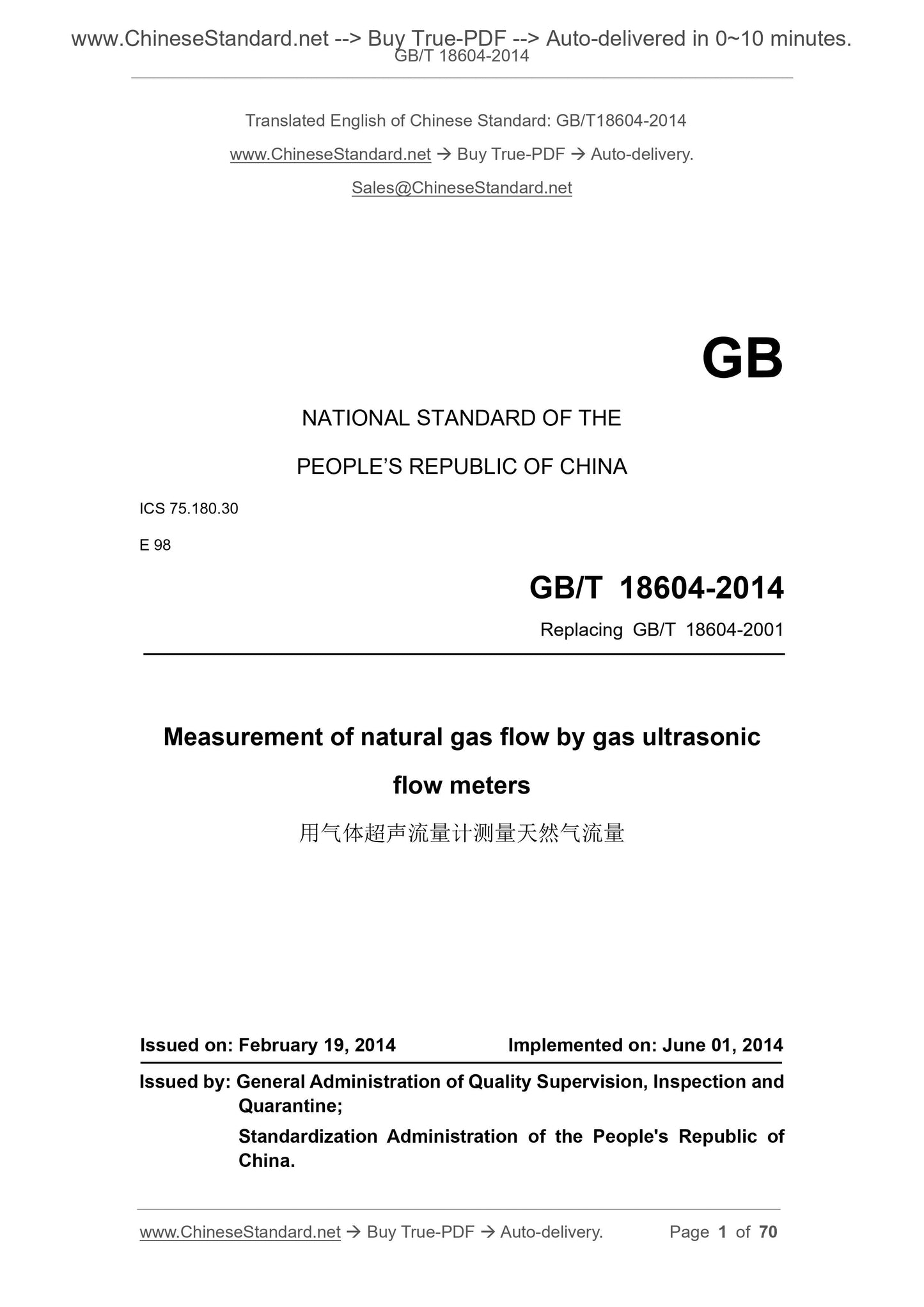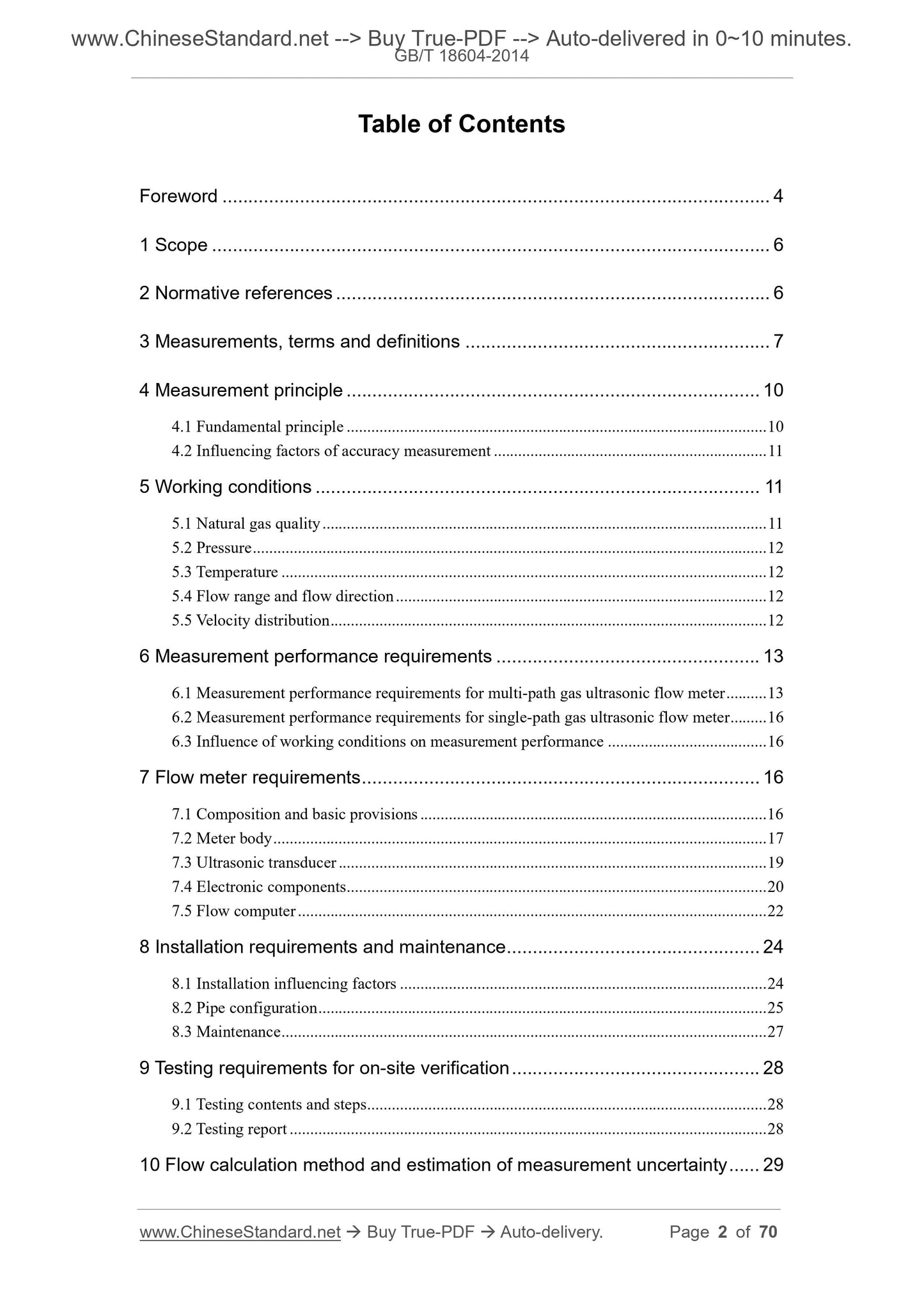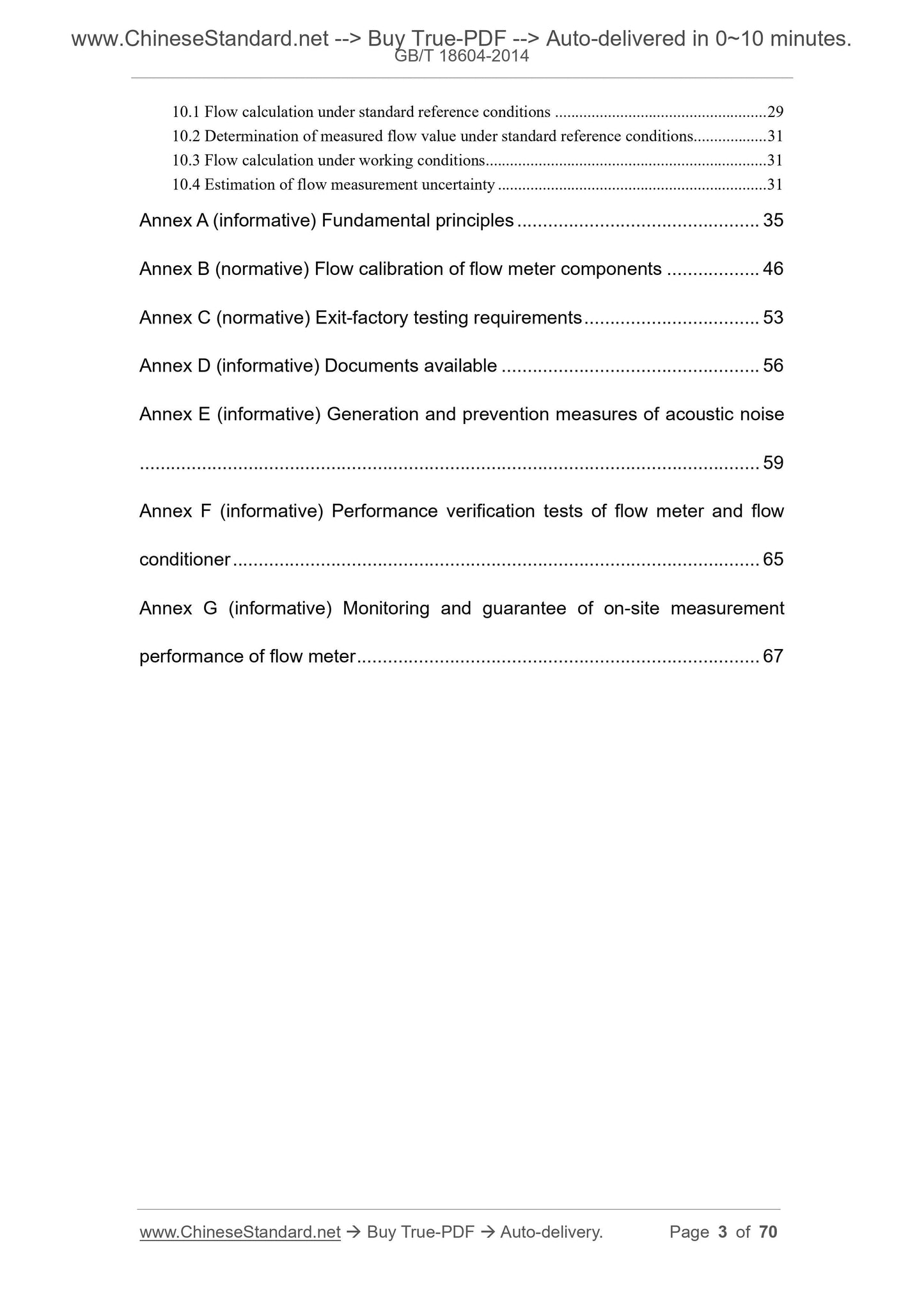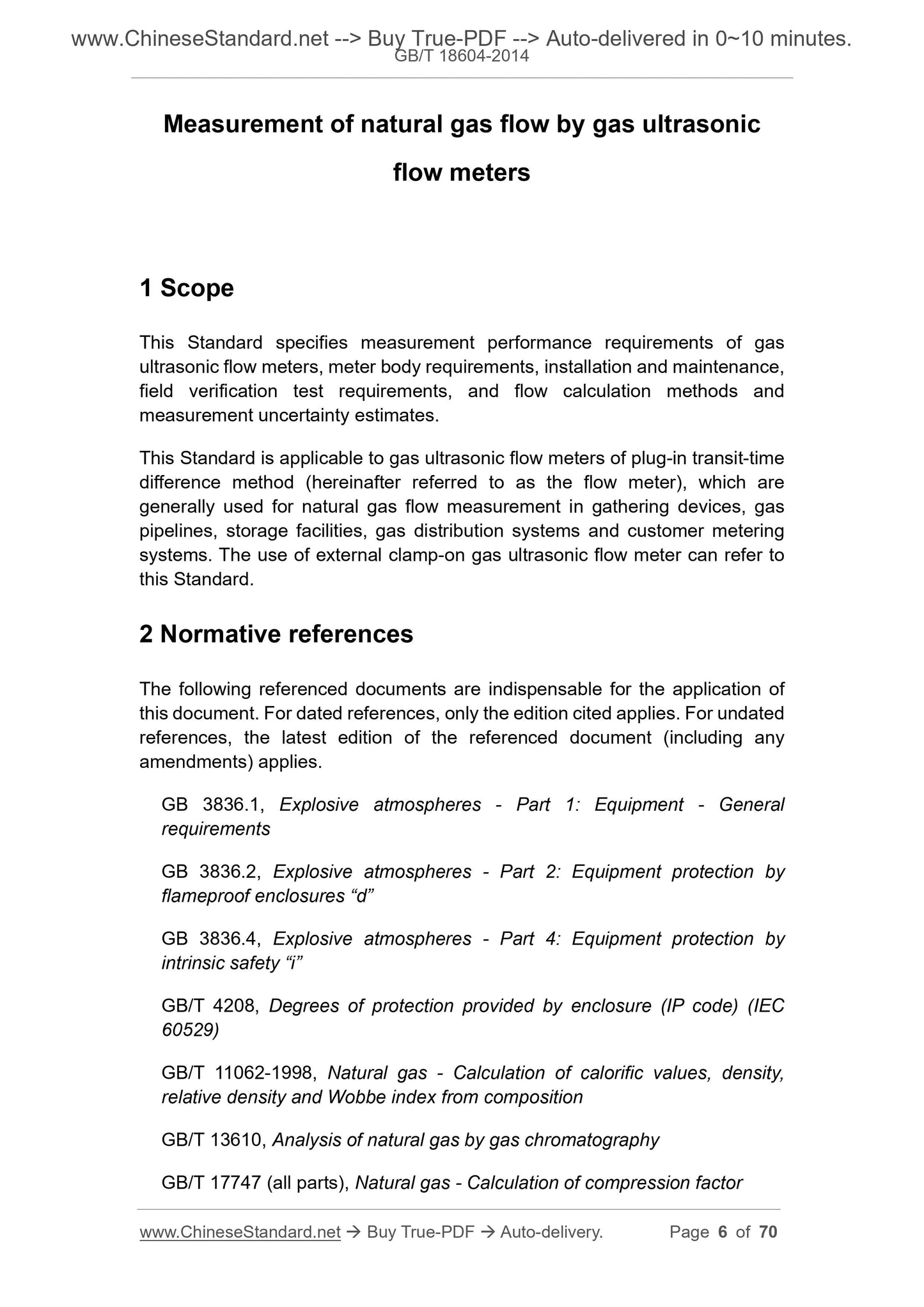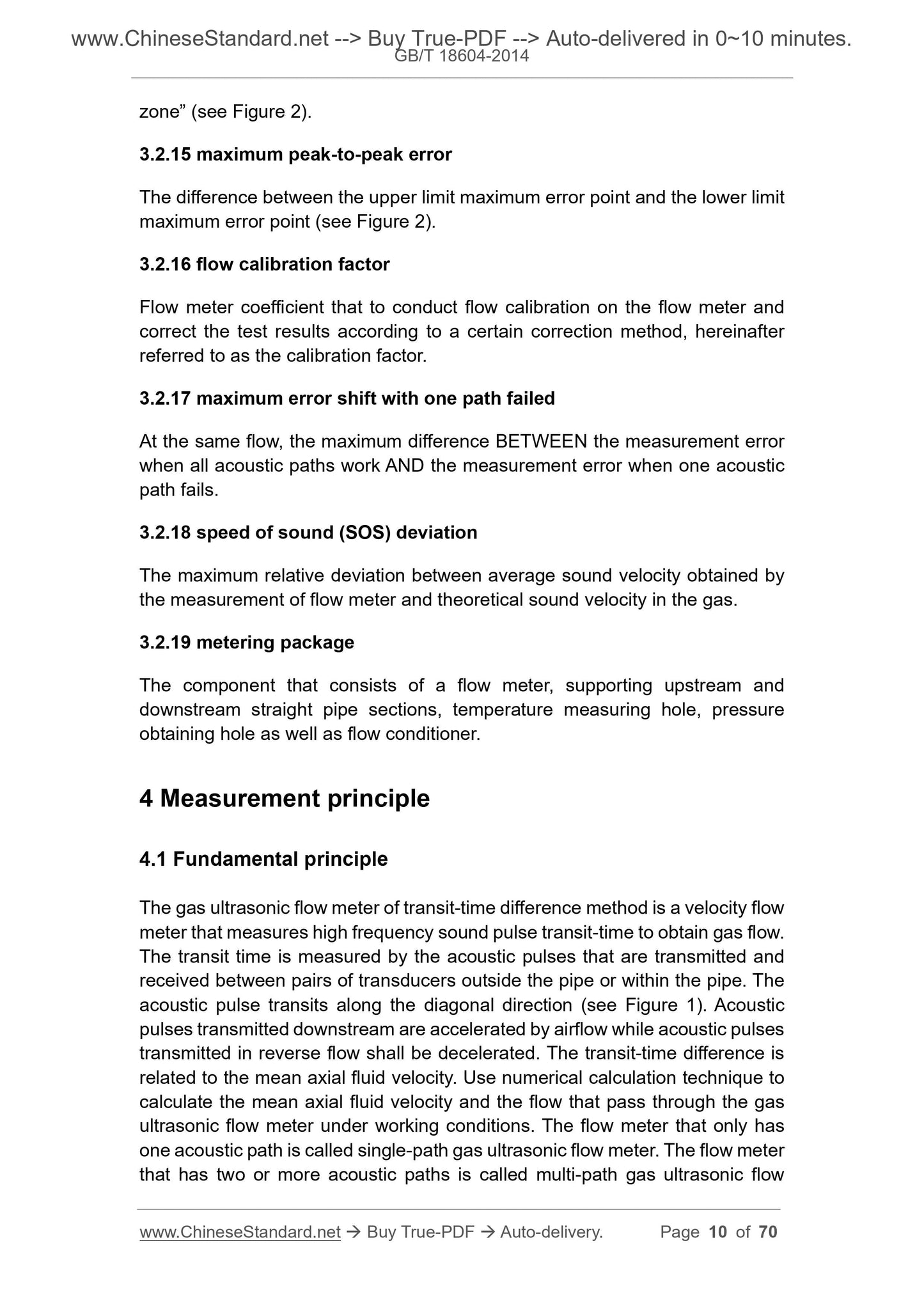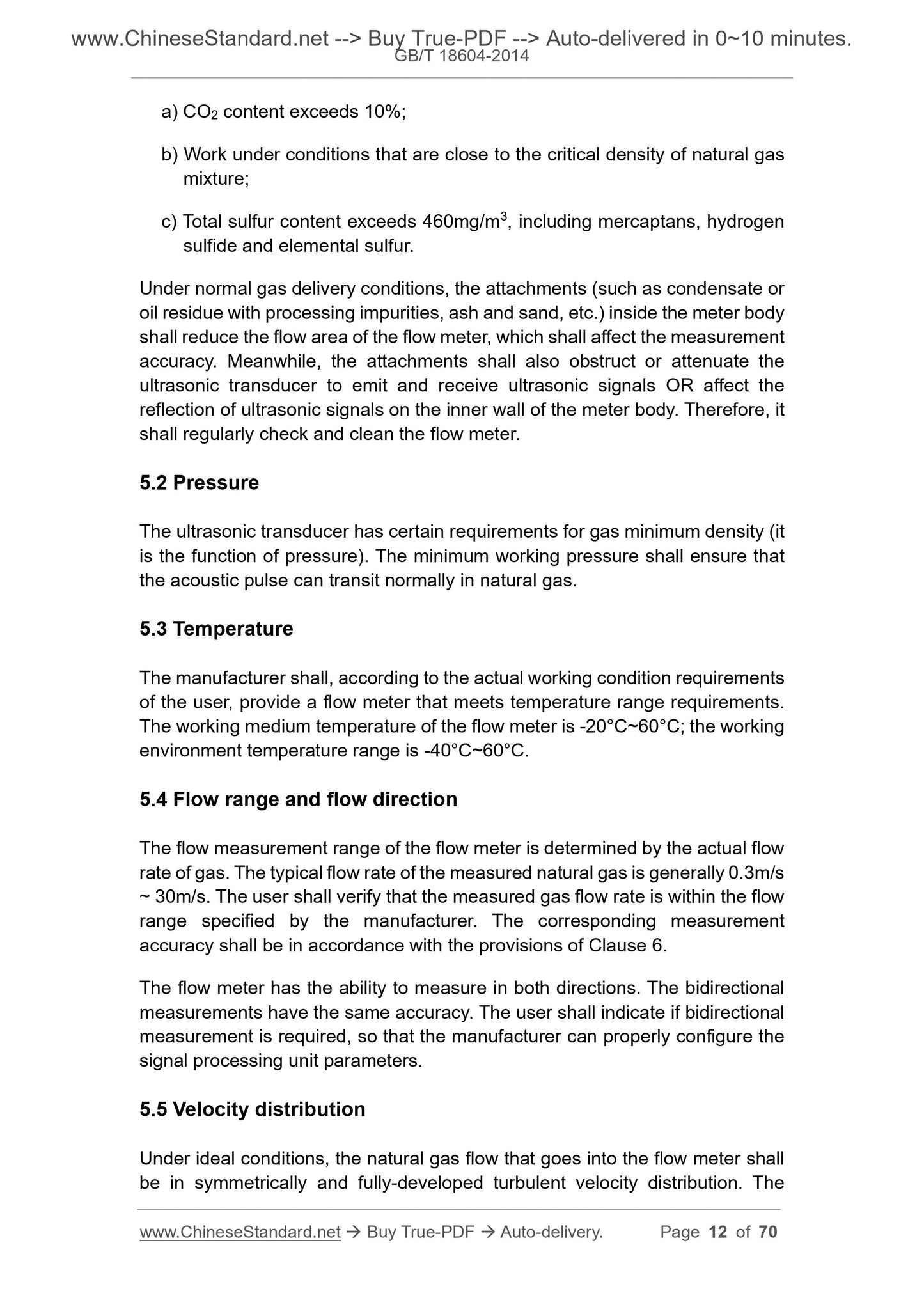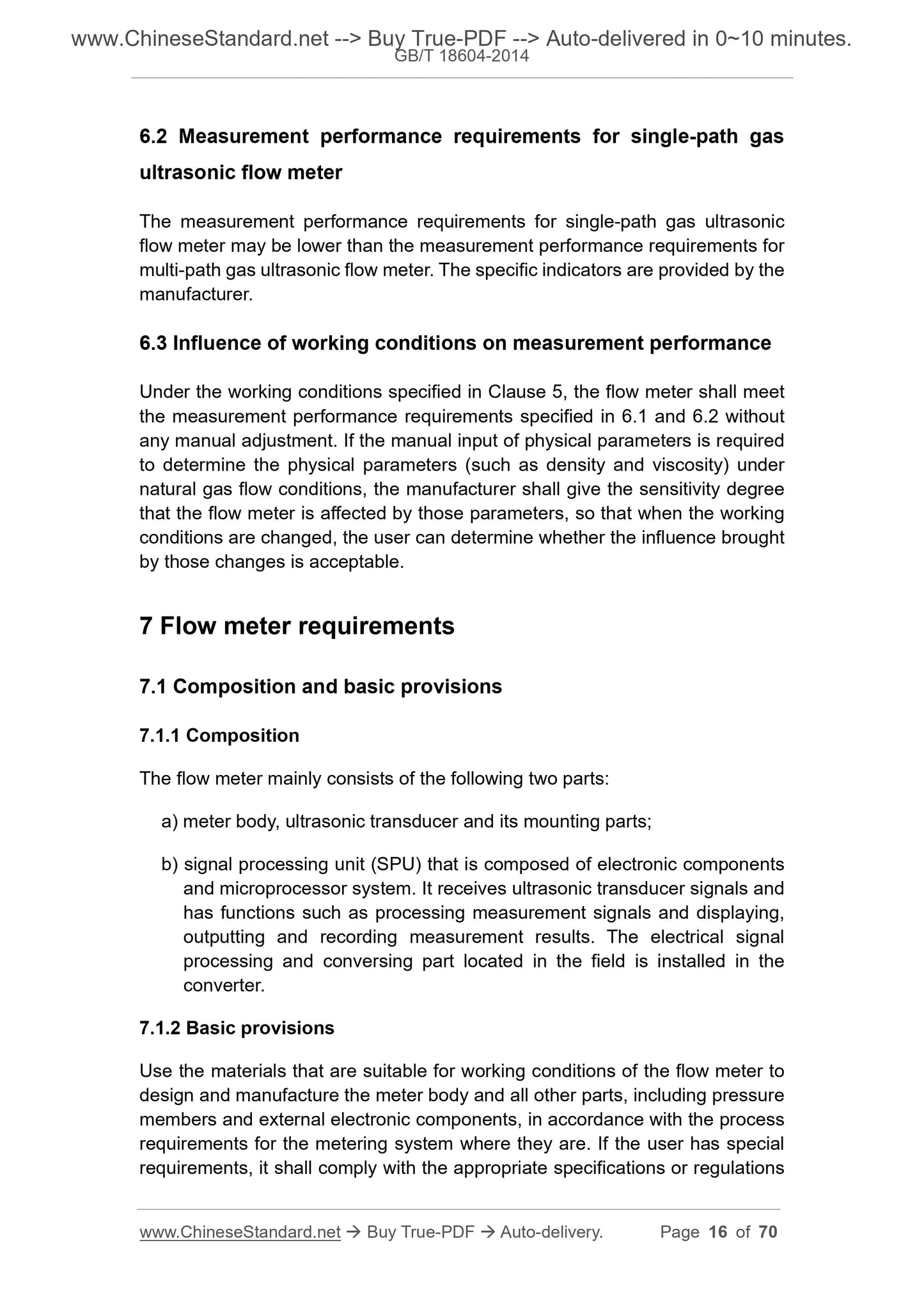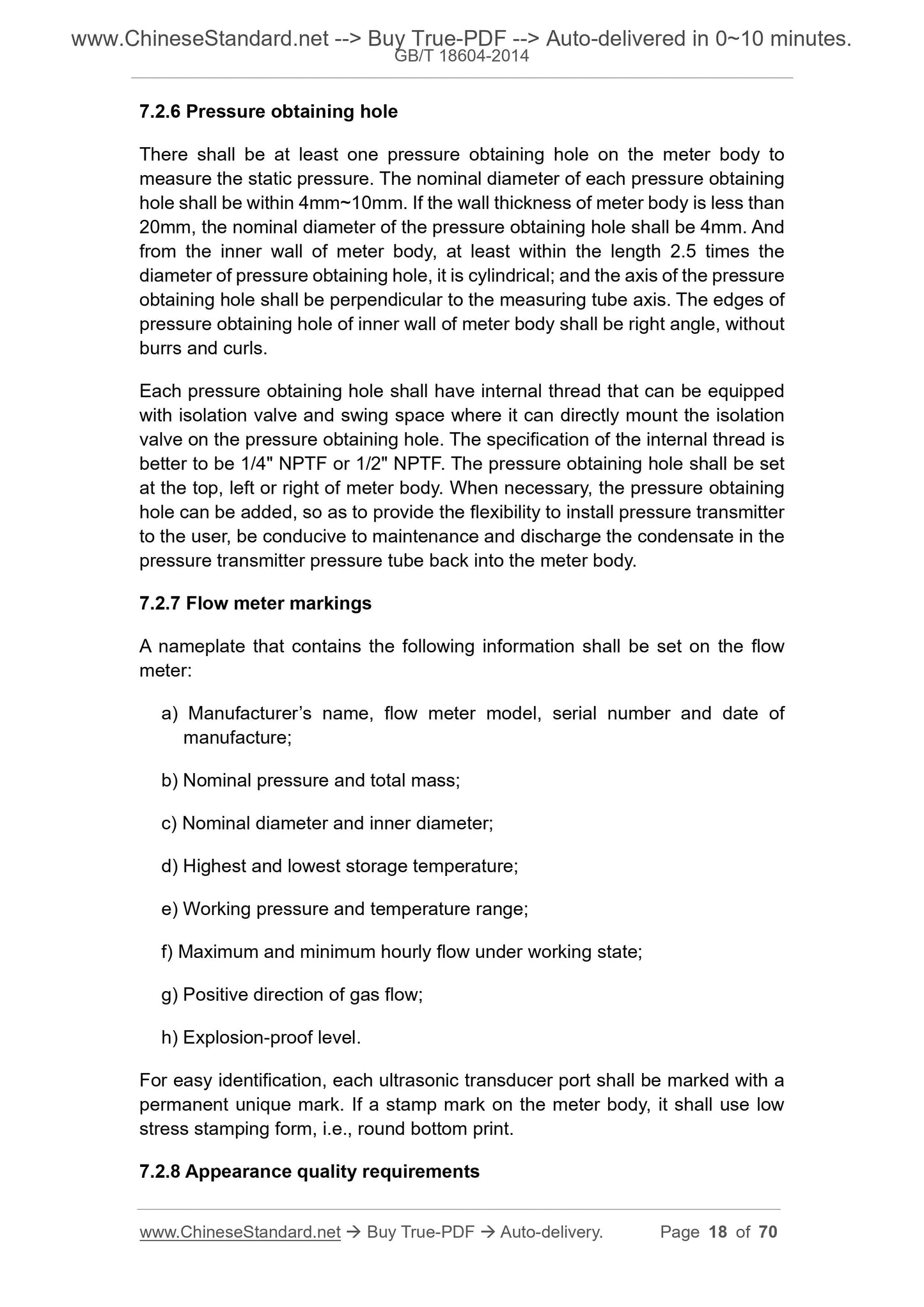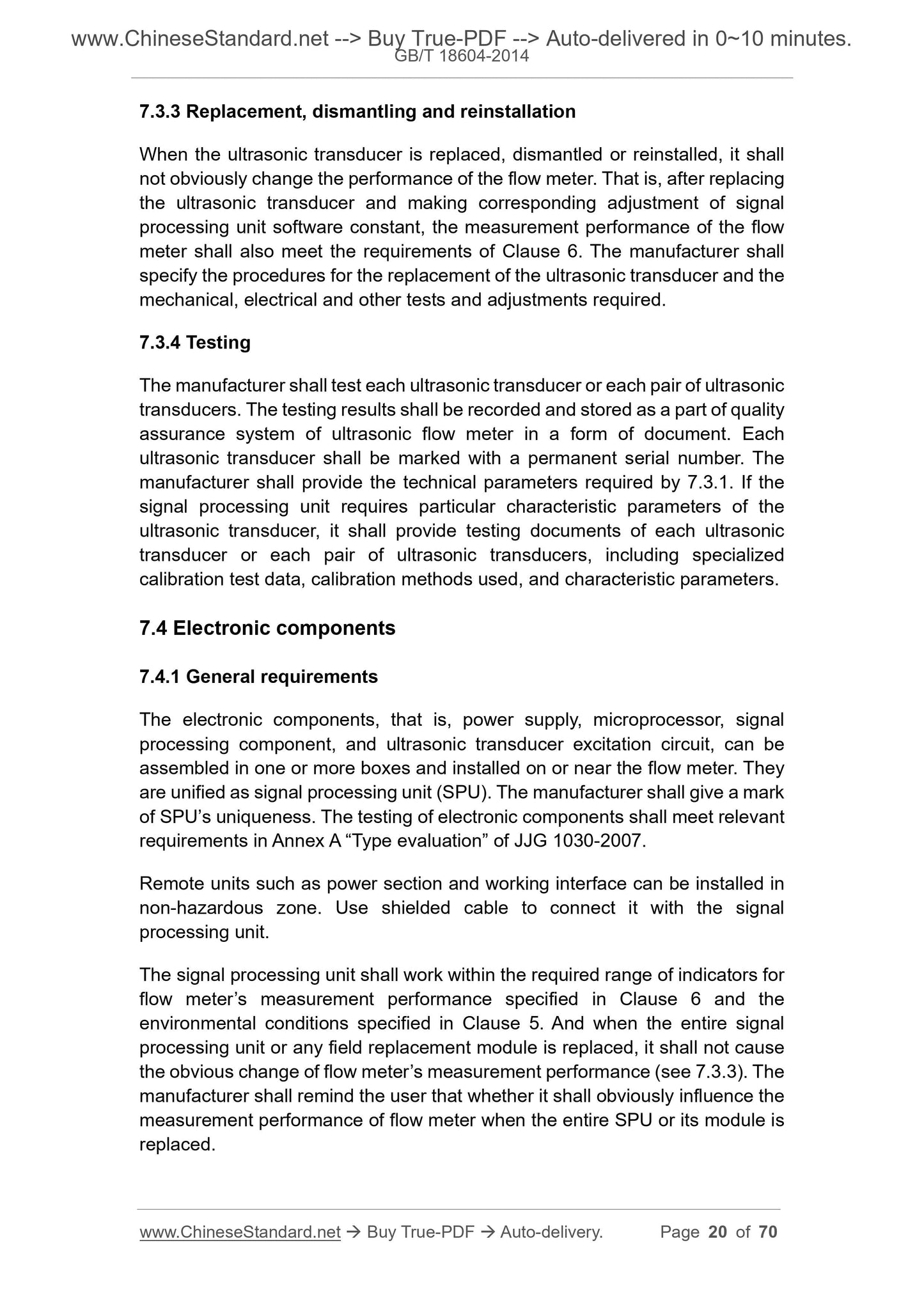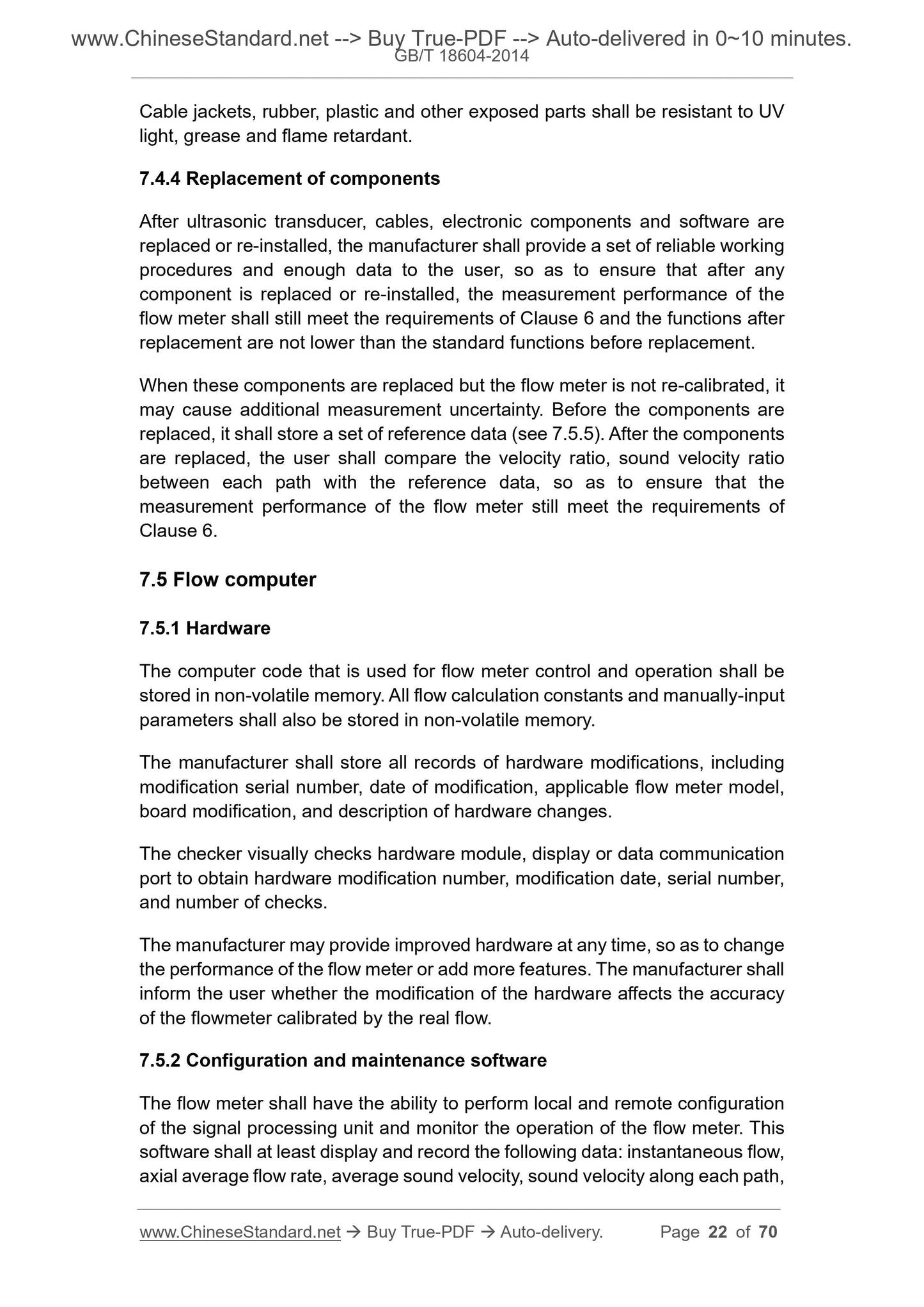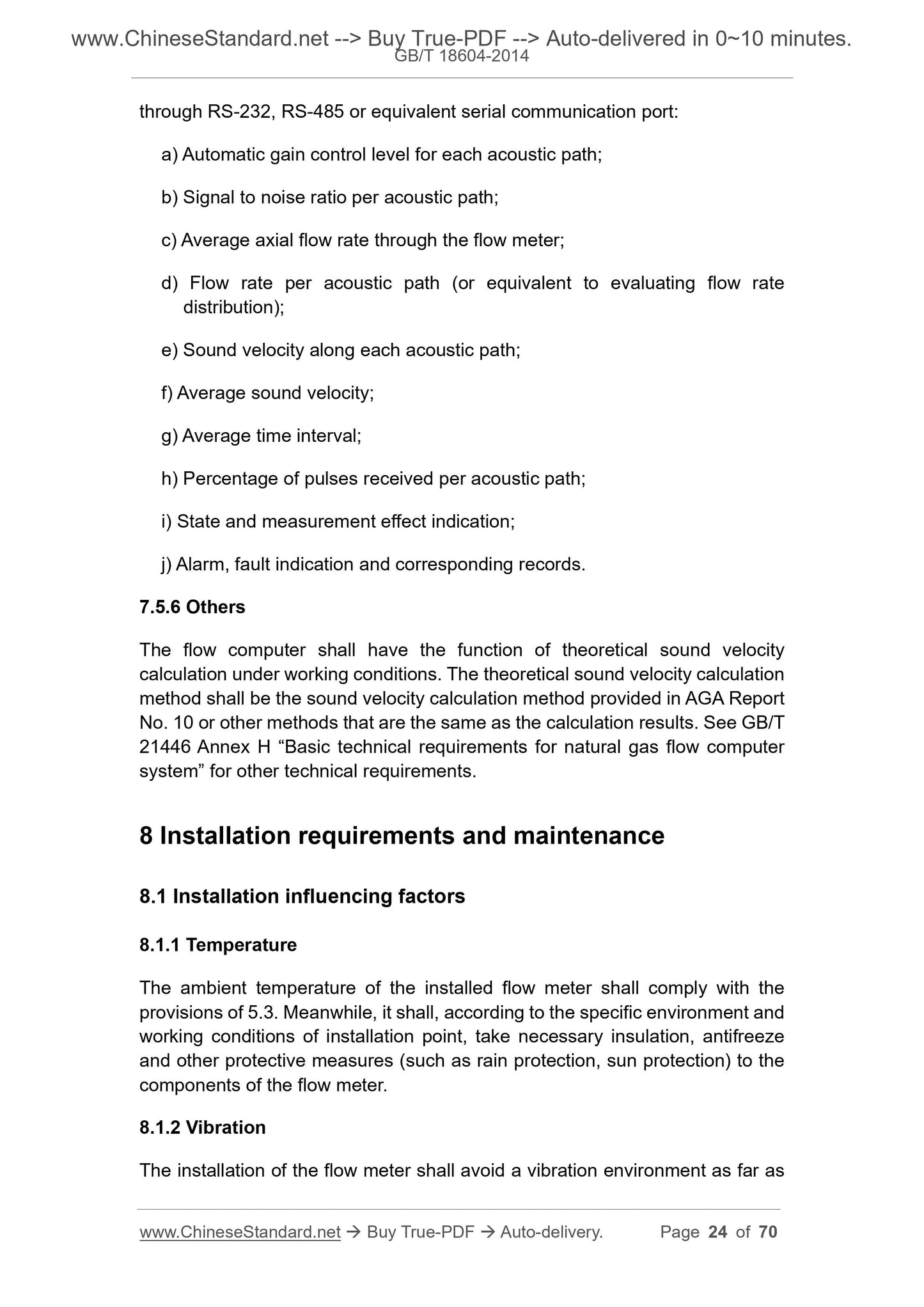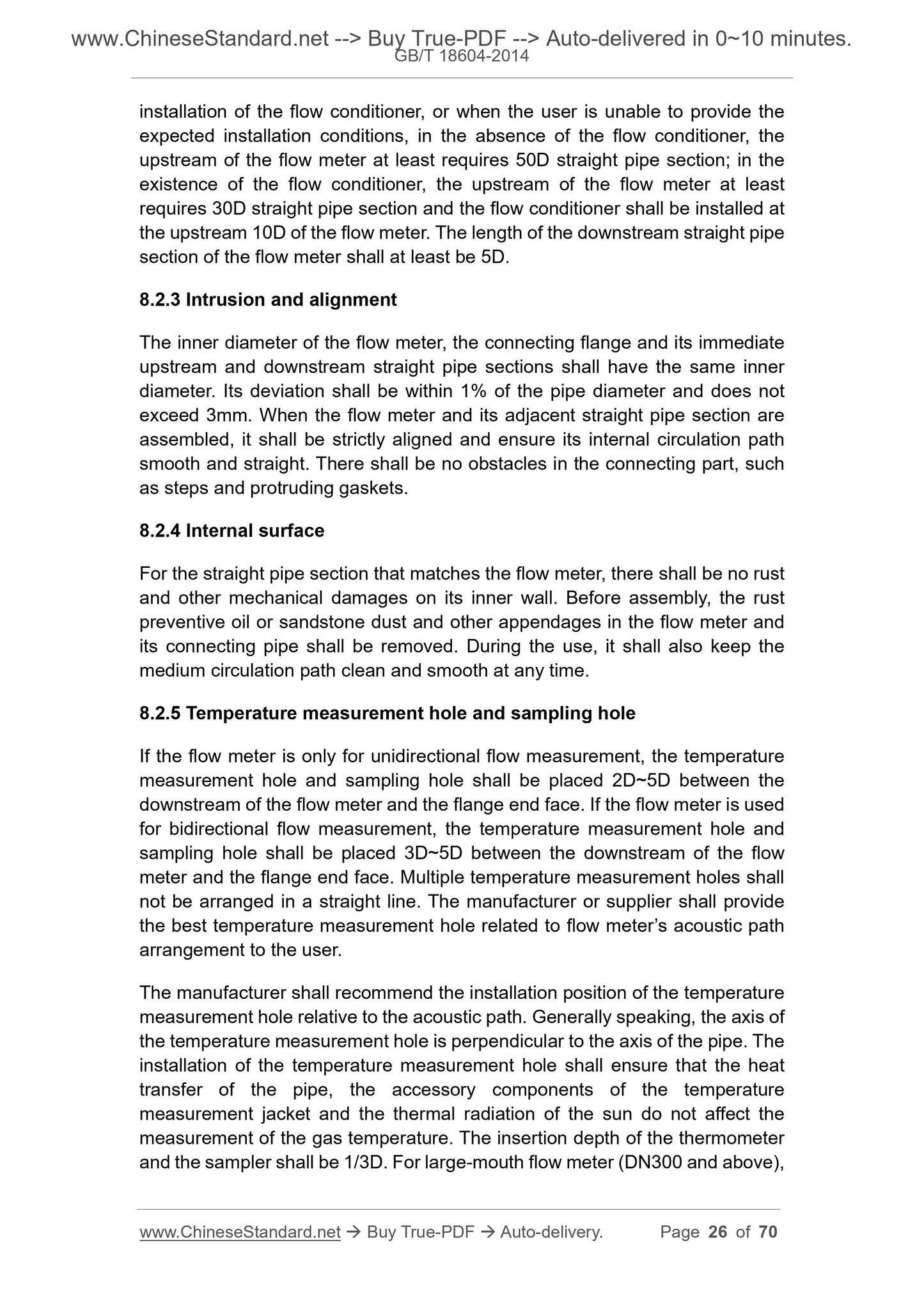1
/
of
12
PayPal, credit cards. Download editable-PDF and invoice in 1 second!
GB/T 18604-2014 English PDF (GB/T18604-2014)
GB/T 18604-2014 English PDF (GB/T18604-2014)
Regular price
$285.00
Regular price
Sale price
$285.00
Unit price
/
per
Shipping calculated at checkout.
Couldn't load pickup availability
GB/T 18604-2014: Measurement of natural gas flow by gas ultrasonic flow meters
Delivery: 9 seconds. Download (and Email) true-PDF + Invoice.Get Quotation: Click GB/T 18604-2014 (Self-service in 1-minute)
Newer / historical versions: GB/T 18604-2014
Preview True-PDF
Scope
This Standard specifies measurement performance requirements of gasultrasonic flow meters, meter body requirements, installation and maintenance,
field verification test requirements, and flow calculation methods and
measurement uncertainty estimates.
This Standard is applicable to gas ultrasonic flow meters of plug-in transit-time
difference method (hereinafter referred to as the flow meter), which are
generally used for natural gas flow measurement in gathering devices, gas
pipelines, storage facilities, gas distribution systems and customer metering
systems. The use of external clamp-on gas ultrasonic flow meter can refer to
this Standard.
Basic Data
| Standard ID | GB/T 18604-2014 (GB/T18604-2014) |
| Description (Translated English) | Measurement of natural gas flow by gas ultrasonic flow meters |
| Sector / Industry | National Standard (Recommended) |
| Classification of Chinese Standard | E98 |
| Classification of International Standard | 75.180.30 |
| Word Count Estimation | 44,453 |
| Date of Issue | 2/19/2014 |
| Date of Implementation | 6/1/2014 |
| Older Standard (superseded by this standard) | GB/T 18604-2001 |
| Quoted Standard | GB 3836.1; GB 3836.2; GB 3836.4; GB/T 4208; GB/T 11062-1998; GB/T 13610; GB/T 17747.1; GB/T 17747.2; GB/T 17747.3; GB/T 21446-2008; SY/T 0599-2006; JJG 1030-2007; ISO 5167-1-2003; AGA REPORT NO.10 |
| Regulation (derived from) | 2014 National Standards Bulletin No. 2 |
| Issuing agency(ies) | General Administration of Quality Supervision, Inspection and Quarantine of the People's Republic of China, Standardization Administration of the People's Republic of China |
| Summary | This Standard specifies performance requirements for measuring ultrasonic gas flowmeter, flowmeter body requirements, installation, and maintenance, on-site verification testing requirements, as well as the flow calculation method and the measurement unce |
Share
